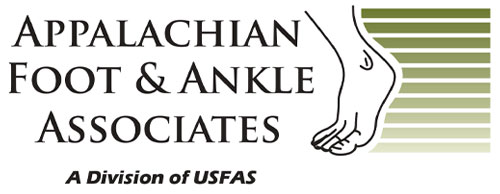Corns and calluses are regions of thickened skin meant to protect the feet from irritation while walking. In general, these layers of hardened skin protect areas of the feet where excess pressure exists. These areas of the feet aren’t contagious, but if they develop too thick, they can become painful. For people with diabetes and decreased blood circulation, these thick skin areas can lead to more severe foot problems if not treated.
When the pressure of a corn or callus has become uncomfortable, painful, and irritating while walking, our podiatrists can help remove these hardened tissues of the skin and help treat the soft tissues underneath. At Appalachian Foot & Ankle Associates, we focus on podiatric care services that specialize in diagnosing and treating all manner of foot conditions.
What’s the Difference Between a Corn and Callus?
Both corns and calluses produce protective layers of skin to pad the areas most affected on the feet. These skin areas mostly occur along with the bony areas of the feet; however, both form in different ways.
- Corns – Corns are small, circular hard particles of skin that usually occur along the top of the toes and the bunion. They can have different textures, either being hard to the touch, or soft but present. Soft corns can be macerated by fluid and soft tissue, more prone to infection when pressed on, and can form hard corns. Hard corns have a deep hard center deeply embedded into the foot and take up healthy tissue.
- Calluses – Calluses are thick areas of skin that occur flatter, spread out more, and usually occur at the feet’ bottom and sides. They can appear yellow due to the collection of dead skin, and with calluses, there are no nerves or soft tissues surrounding the callus. Calluses are typically easier to treat due to how they form along the top of the tissue.
Both corns and calluses can form from environmental causes, such as going barefoot, manual labor, and ill-fitting footwear. Other causes, such as flat feet, damaged sweat glands, and other foot deformities can cause corns and calluses to form. However, when they begin to develop painful sores, infections, and soreness, they can be treated by our podiatrists.
How are Corns and Calluses Treated?
Our podiatrists can remove corns and calluses at Appalachian Foot & Ankle Associates, leaving behind healthier skin and tissue. For both corns and calluses, we offer the following procedures:
- Corns – For hard corns, our podiatrists will remove the corn using a scalpel through thin slices, leaving behind healthy tissue. The corn’s center will also be removed, leaving behind a small dimple or hole in the foot’s tissue. Our podiatrist will prescribe medication to protect the dimple from infection and discourage further corn formation during the healing process. Our physicians may also prescribe a toe separator for soft corns to avoid sweat from rubbing into the area.
- Calluses – Calluses require a simpler treatment, using the scalpel to remove the excess skin from the bottom of the fee. Because calluses contain no nerves, the removal will not hurt the patient, and during that time, patients will need to track the progress of their feet for 6 to 8 weeks after treatment to prevent the calluses from reforming.
With expert treatment, your corns and calluses can be managed and removed completely. For more information about callus and corn removal services and other treatment options, contact Appalachian Foot & Ankle Associates by calling 828-277-8402 to schedule an appointment at one of our North Carolina locations in Marion or Asheville today.





 In CA By O360®
In CA By O360®